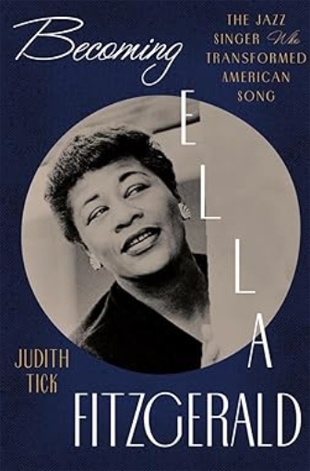We offer this book to you with the suggestion that Ella Fitzgerald might be considered for sainthood or sage-hood or wisdom guide, or simply as the inspirational fabulous woman of beauty and creativity that she was.
We enjoyed every page of this biography, revealing the roots and extent of the great jazz performer’s transcendence.
She grew up in an African Methodist Episcopal Church in Yonkers, New York, attending worship and Sunday school, singing in choir. Most striking about Ella is how people of all faiths, or none, have found in her voice their heart and soul. This is not only because she became famous singing Soul music and Spirituals. Ella had a way of turning sung words — no matter what they are — into a soul’s passion.
Like a saint, she experienced a great deal of personal pain and loss, vulnerability and doubt. Having lost connection to her father as a toddler, her mother then died when she was 15. Ella spent time in an orphanage and a reformatory school for girls. All her life, she was told that she wasn’t pretty. She sang on the streets of Harlem to earn money and at 17 performed at an amateur night at Harlem’s famous Apollo Theater, her first big break.
As a young performer, Ella faced both Jim Crow and “Jane Crow,” which author Judith Tick reminds us was a term “to describe the dual burden of sex discrimination and racial prejudice” popularized by the Black civil rights lawyer Pauli Murray, which influenced Supreme Court justice Ruth Bader Ginsburg.
Tick’s biography is full of stories of Ella’s relationships with great musicians of her era: She performed for seven decades. She traveled the world and became famous for her art. Tick’s accounts of particular performances and how they resonated with audiences are crafted in ways that allow the reader to feel they are sitting in the audience.
There are also accounts of her battles with grief, jealousy, bad marriages, and serious health problems late in life, particularly from the effect of diabetes. She was always fighting overt and institutional racism — in hotels, in the comments of newspaper columnists and other media, and at the hands of music execs.
In person, Ella was notoriously “shy and insecure,” according to fellow musician Oscar Peterson, and others, but this didn’t keep her from being a civil-rights activist, using her position and popularity to lift others. Perhaps her insecurity is one reason why she shined so brightly on stage. This biography makes it poignantly clear that Ella was an artist who created soul from her own deep repertoire, offering it to the rest of us.
